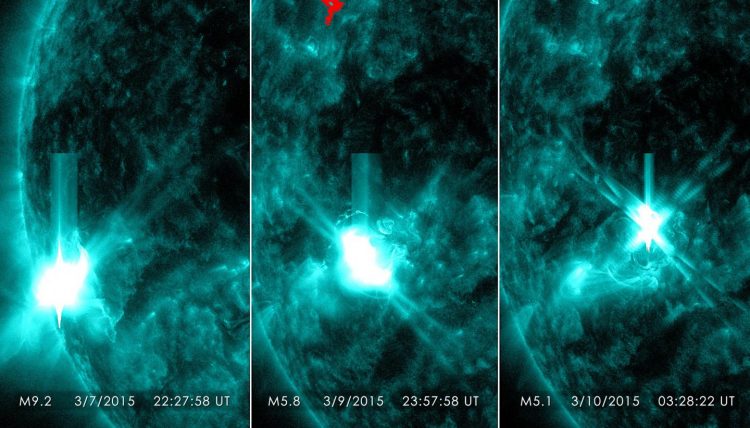SDO captures images of mid-level solar flares

NASA's SDO captured images of three mid-level solar flares March 7-9, 2015, all from the same active region on the surface of the sun. This image of the flares shows a wavelength of EUV light that highlights the intense heat of a solar flare and that is typically colorized in teal. Credit: NASA/SDO
NASA's Solar Dynamics Observatory captured images of the flares, which were classified as an M5.8-class and an M5.1-class, respectively.
These were the second and third flares from the same active region — numbered Active Region 12297 — after it rotated over the left side of the sun on March 7.
Media Contact
All latest news from the category: Physics and Astronomy
This area deals with the fundamental laws and building blocks of nature and how they interact, the properties and the behavior of matter, and research into space and time and their structures.
innovations-report provides in-depth reports and articles on subjects such as astrophysics, laser technologies, nuclear, quantum, particle and solid-state physics, nanotechnologies, planetary research and findings (Mars, Venus) and developments related to the Hubble Telescope.
Newest articles

A universal framework for spatial biology
SpatialData is a freely accessible tool to unify and integrate data from different omics technologies accounting for spatial information, which can provide holistic insights into health and disease. Biological processes…

How complex biological processes arise
A $20 million grant from the U.S. National Science Foundation (NSF) will support the establishment and operation of the National Synthesis Center for Emergence in the Molecular and Cellular Sciences (NCEMS) at…

Airborne single-photon lidar system achieves high-resolution 3D imaging
Compact, low-power system opens doors for photon-efficient drone and satellite-based environmental monitoring and mapping. Researchers have developed a compact and lightweight single-photon airborne lidar system that can acquire high-resolution 3D…





















